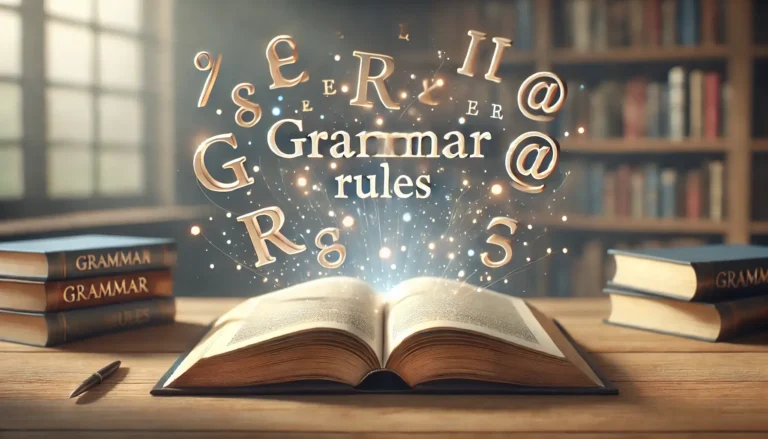Question tags are short questions added at the end of statements. Their main function is to seek confirmation, clarification, or agreement about something that has been said. In essence, they help to ensure that the listener agrees or disagrees with the speaker’s statement. While they are common in informal speech, they also encourage conversation and interaction.
Uses of Question Tags
To confirm if something is true or not
Question tags are often used to check if a statement is correct. For example, if someone says, “You’re coming to the party,” and isn’t completely sure, they might add a question tag to confirm: “You’re coming to the party, aren’t you?”
To encourage a response from the listener
Adding a question tag can invite a reply or encourage the listener to continue the conversation. It’s a polite way to engage someone, especially when you expect them to respond. For instance, “This is a nice place, isn’t it?” invites the listener to share their opinion.
Formation of Question Tags
Question tags are formed using the auxiliary (helping) verb or modal verb from the main sentence, followed by the appropriate subject pronoun. The rules for forming question tags are as follows:
1. Positive Statement → Negative Question Tag
When the statement is positive, the question tag must be negative. This helps to gently confirm or clarify the statement.
Examples:
“Jack is from Spain, isn’t he?”
Explanation: The statement “Jack is from Spain” is positive. Therefore, the question tag is negative: “isn’t he.”
“Mary can speak English, can’t she?”
Explanation: Since “Mary can speak English” is a positive statement, the negative question tag “can’t she” is used to confirm it.
2. Negative Statement → Positive Question Tag
When the statement is negative, the question tag must be positive. This creates a balance between the statement and the tag.
Examples:
“They aren’t funny, are they?”
Explanation: The statement “They aren’t funny” is negative, so the positive question tag “are they” is used to balance the sentence.
“He shouldn’t say things like that, should he?”
Explanation: The negative statement “He shouldn’t say things like that” is followed by the positive tag “should he.”
3. Present Simple Tense → Question Tag with ‘do’ or ‘does’
When the verb in the main statement is in the present simple tense (when talking about habits or regular actions), we use the auxiliary verb “do” or “does” in the question tag, depending on the subject.
Examples:
“You play the guitar, don’t you?”
Explanation: “Play” is in the present simple, so the question tag uses “don’t.”
“Alison likes tennis, doesn’t she?”
Explanation: “Likes” is in the present simple, so the question tag uses “doesn’t” to match the singular subject “Alison.”
4. Past Simple Tense → Question Tag with ‘did’
When the verb in the main statement is in the past simple tense, we use “did” in the question tag.
Examples
“They went to the cinema, didn’t they?”
Explanation: The verb “went” is in the past simple, so the tag uses “didn’t.”
“She studied in New Zealand, didn’t she?”
Explanation: “Studied” is in the past simple, and the question tag “didn’t she” follows.
5. Negative Words in Statements → Positive Question Tags
If the statement contains a word with a negative meaning (such as hardly, barely, rarely, never, seldom, etc.), the question tag must be positive, even though the sentence may not appear obviously negative.
Examples
“He hardly ever speaks, does he?”
Explanation: The phrase “hardly ever” implies a negative idea (he almost never speaks), so the question tag is positive: “does he.”
“They rarely eat in restaurants, do they?”
Explanation: “Rarely” has a negative meaning, so the positive tag “do they” is used.
Special Cases of Question Tags
Some sentences and expressions have unique rules for forming question tags. Let’s look at a few:
1. “I am” Statements
When using “I am” in a statement, the question tag is “aren’t I” (even though this seems unusual).
Example
“I am attractive, aren’t I?”
Explanation: Although “am” is used in the statement, the question tag is “aren’t I,” not “amn’t I.”
2. Positive Imperatives
When making a request or giving a command (positive imperative), you can use “will you” or “won’t you” in the tag, depending on how strong you want the request to sound.
Examples
“Stop daydreaming, will you?”
“Help me with this, won’t you?”
3. Negative Imperatives
For negative commands, the tag is usually “will you.”
Example
“Don’t stop singing, will you?”
Explanation: The imperative is negative (“Don’t stop”), so we use “will you” to form the tag.
4. Let’s Statements
When starting a suggestion with “Let’s,” the question tag is “shall we” to invite agreement or confirmation.
Example
“Let’s go to the beach, shall we?”
5. “Have got” (Possession)
For sentences with “have got” to express possession, the tag is formed using “hasn’t” or “haven’t.”
Example
“He has got a car, hasn’t he?”
6. “There is / are” Statements
When using existential phrases like “There is” or “There are,” the tag is formed based on the subject.
Example
“There aren’t any spiders in the bedroom, are there?”
“There is some milk in the fridge, isn’t there?”
7. “This / That is” Statements
When the sentence starts with “This is” or “That is,” the question tag is formed with “isn’t it.”
Example
“This is Paul’s pen, isn’t it?”
Conclusion
By mastering the formation of question tags, you’ll improve your fluency in both speaking and writing. Remember, question tags are not just about grammar but also about how you engage with your listener!








